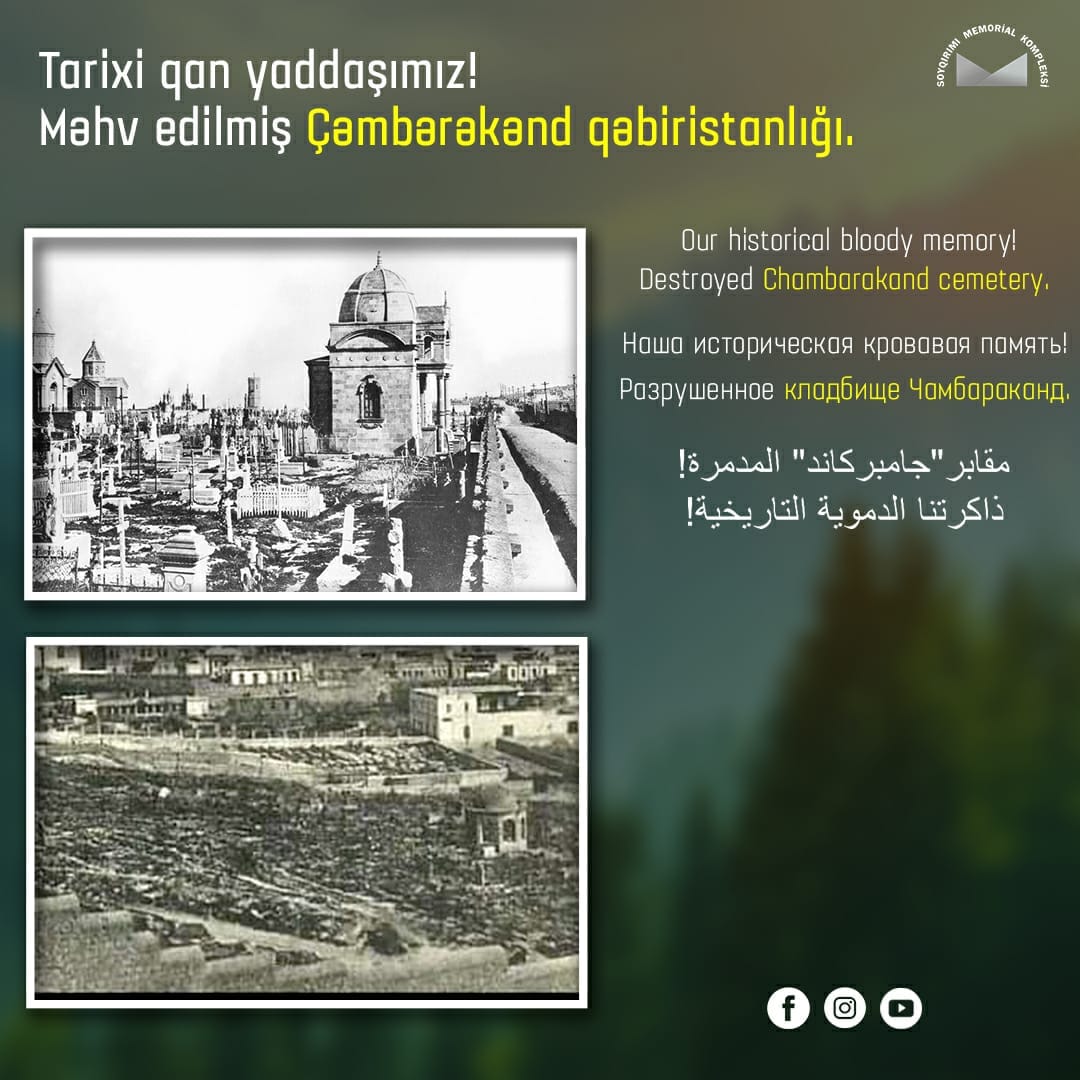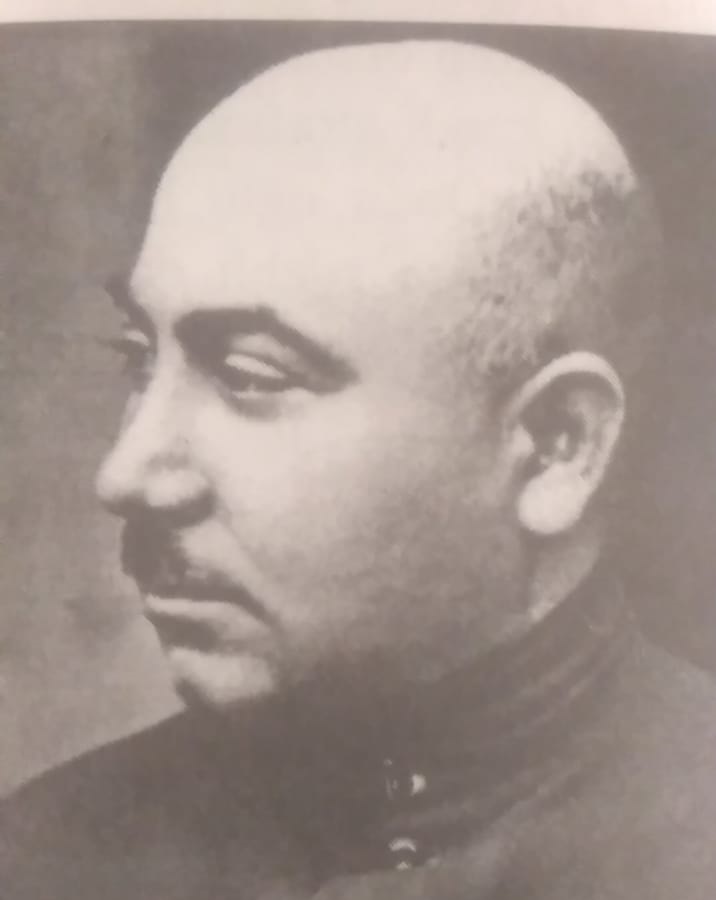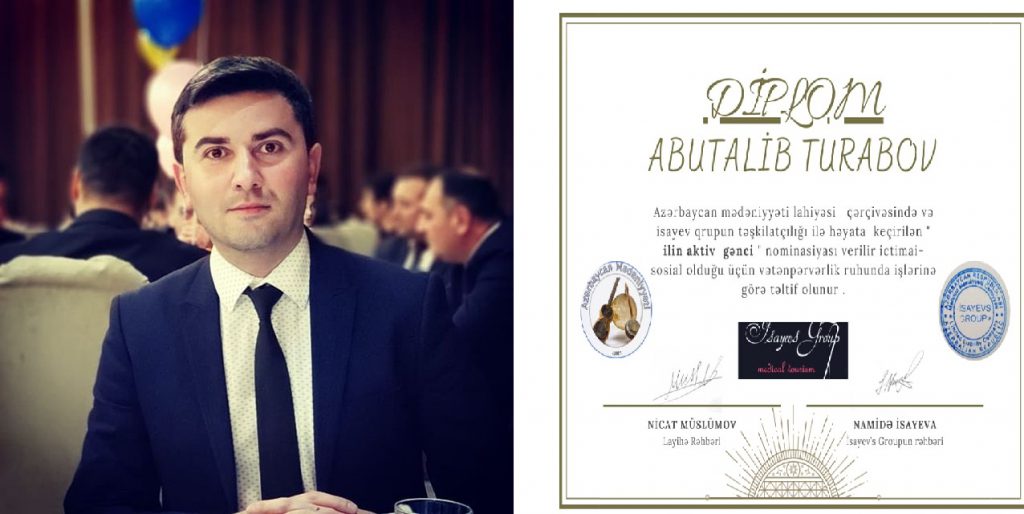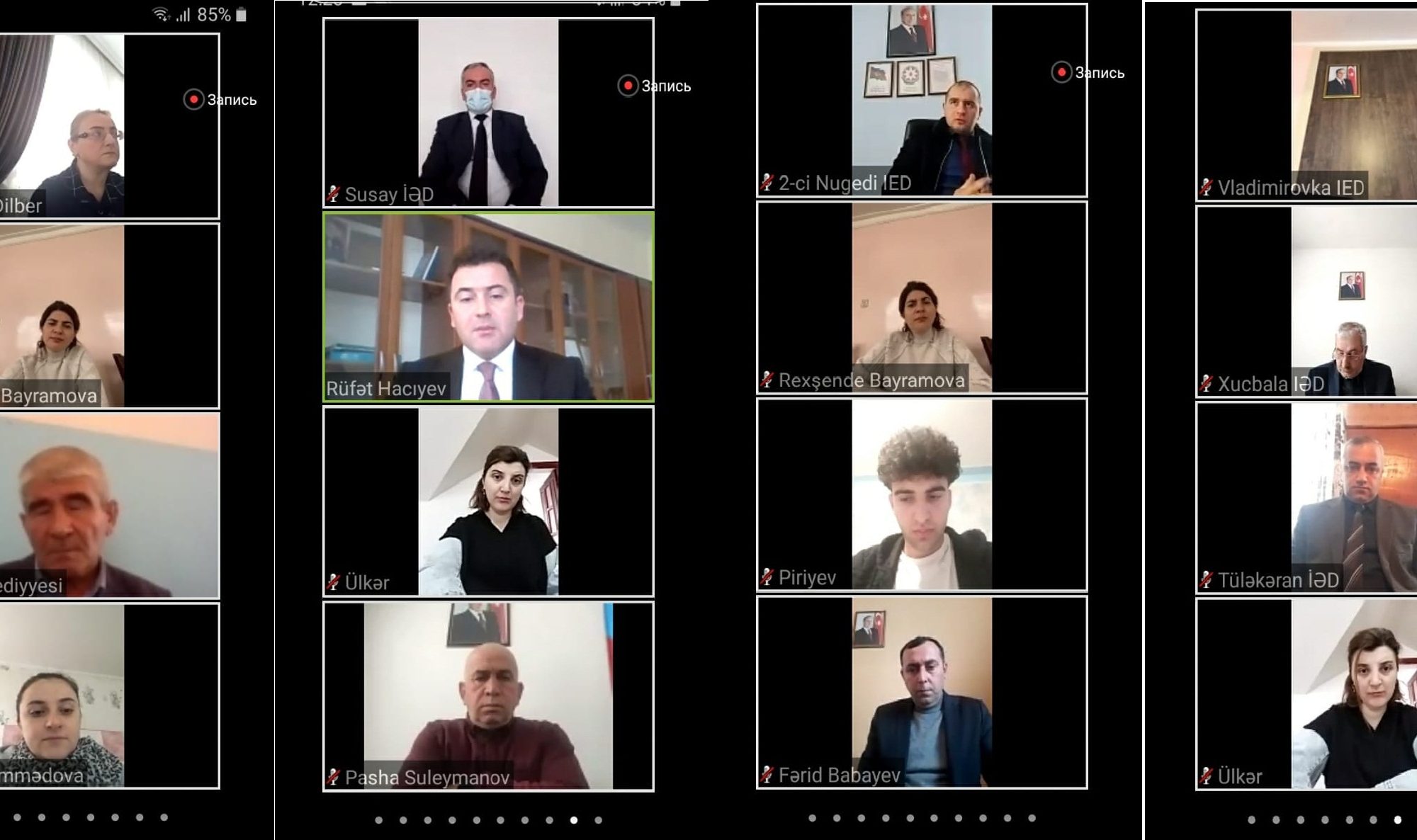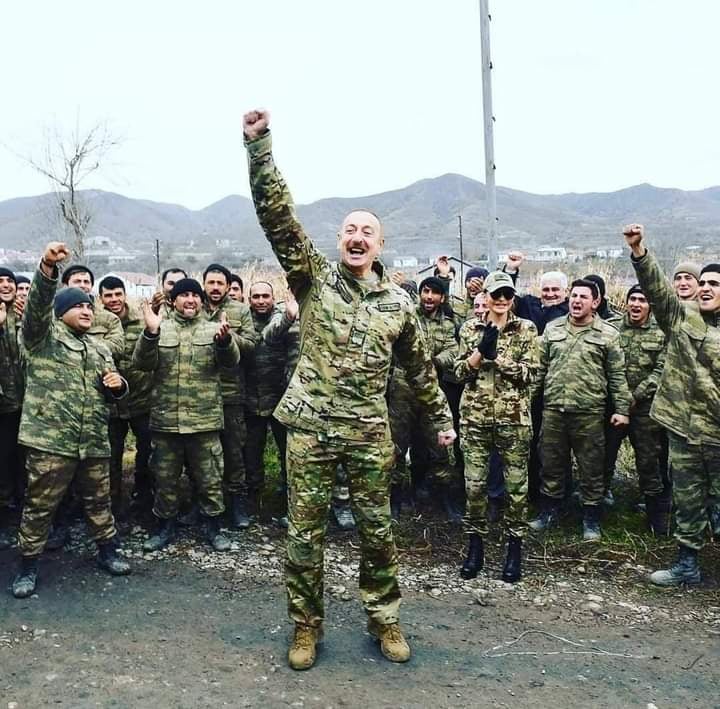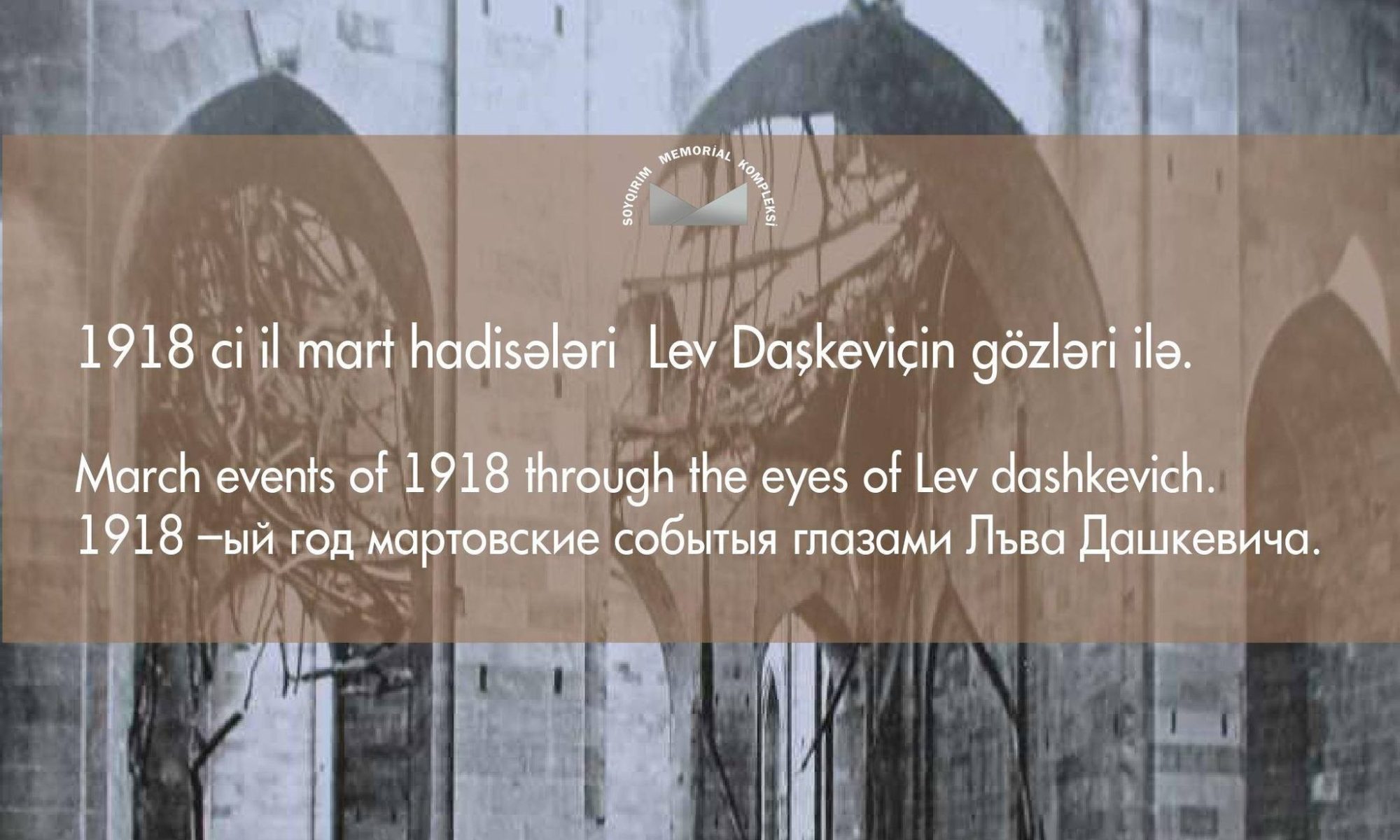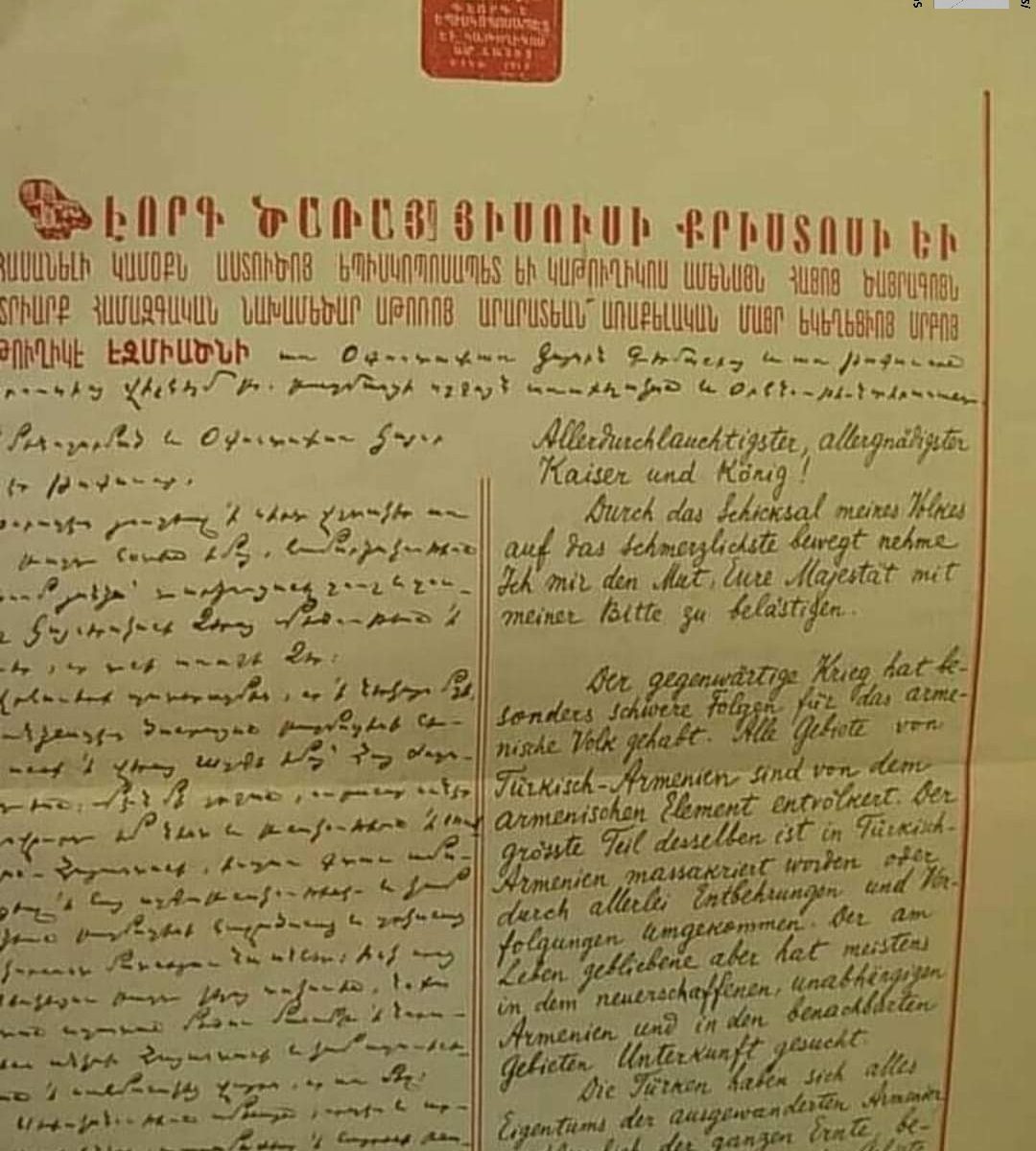
Huseyn Musayev, an active fighter who fought in the local resistance movement against the Armenian Dashnaks in 1918

We present within the project "Let's study Karabakh monuments


This is the Abbas Mirza Mosque built in the city of Iravan during the period of Iravan khanate (1747-1828). During the Soviet period, this sacred place was destroyed and neglected. Today, only part of the outer wall of the mosque is hidden behind the newly built houses.
The guide of the Memorial Complex was awarded a diploma in the nomination "Active Youth of the Year"

Abutalib Turabov, an employee of the Guba Genocide Memorial Complex, was awarded a diploma in the “ACTIVE YOUTH OF THE YEAR” nomination, organized by Isayev’s group within the framework of the Azerbaijan Cultural Project, for his work in the spirit of patriotism and promotion of national moral values in 2020.
We present within the project "Let's study Karabakh monuments" Aghdam Juma Mosque

President Ilham Aliyev held a video conference dedicated to the decisiveness, success and prospects for the development of our statehood.

On December 24, 2020, a video conferencing was held in Guba regional organization of “YENI Azerbaijan” party. The video conferencing was held dedicated to the determination of the Mr. Prezident Ilham Aliyev, the successes and prospects for the development of our statehood. The conference was attended by the director of the Guba Genicide Memorial Complex, Dr. Philosophical Sciences Rakhshanda Bayramova and a group of employees of the Scientific, Researches and Exposition Department of the Complex. During the conference, Speakers discussed the activities of President Ilham Aliyev and the Great Victory in the Patriotic War.
THE LEADER WRITING THE STORY! Today is the birthday of the President of the Republic of Azerbaijan, Supreme Commander-in-Chief Ilham Aliyev.
In this regard, we wish Mr. President long life, good health, prosperity and success in achieving his new goals for the benefit of our country.




The two-storey house belonging to Khurshidbanu Natavan, popularly known as "Khan gizi", is a historical and architectural monument of the XVIII century located in Shusha.

A virtual exhibition of photographs by Belarusian photographer Lev Dashkevich was presented to the followers by the staff of the Genocide Memorial Complex via Artsteps
In order to prevent the spread of the COVID-19 virus, the staff of the Genocide Memorial Complex, continues its virtual activities in accordance with the orders and directives, implementing a number of online projects to inform our followers about the realities of the genocide. One of these projects is the organization of virtual photo exhibitions on various topics using the opportunities of the artsteps site. On December 17, 2020, a virtual exhibition of photographs taken by Belarusian photographer Lev Dashkevich during the investigation conducted by the Extraordinary Investigation Commission established by the Azerbaijan Democratic Republic on July 15, 1918 was presented to the audience by the staff of the Complex. It is recommendation to use the exhibition to educate students about the realities of the 1918 genocide against Azerbaijanis by Armenian Dashnaks. To view the virtual photo exhibition, you can go to the directions shown by the following link below.





We present within the project "Let's study Karabakh monuments": Askeran Fortress

Mahmud Efendiyev, fought with his group of fighters in the local resistance movement against the Armenian Dashnaks in 1918

Letter from the Armenian Catholicos Gevorg V to the German Emperor Wilhelm II (August 3, 1918)


